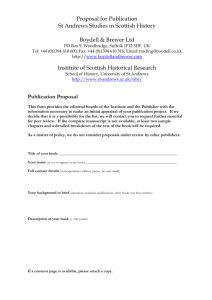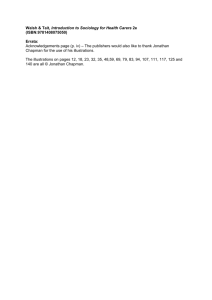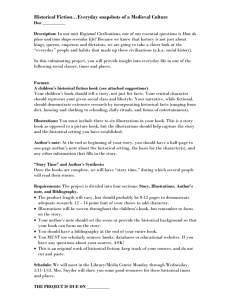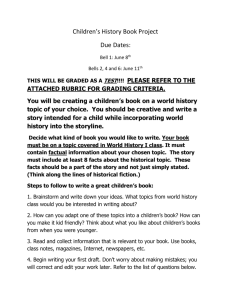OBSERVATION OF BOOK HANDLING AND
advertisement
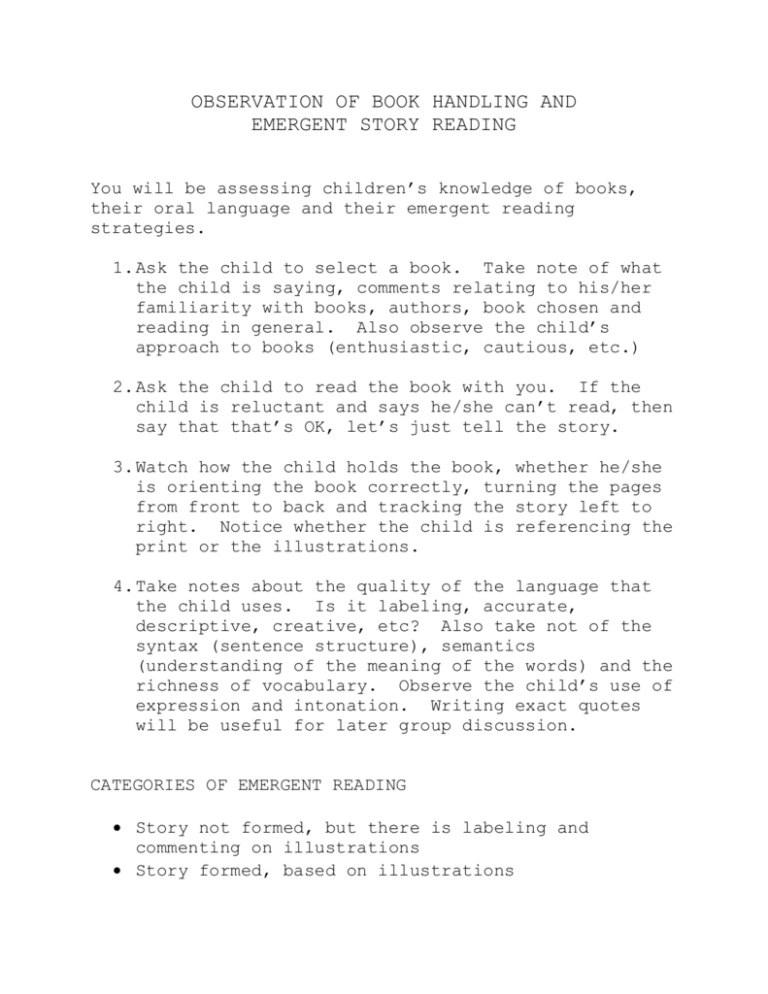
OBSERVATION OF BOOK HANDLING AND EMERGENT STORY READING You will be assessing children’s knowledge of books, their oral language and their emergent reading strategies. 1. Ask the child to select a book. Take note of what the child is saying, comments relating to his/her familiarity with books, authors, book chosen and reading in general. Also observe the child’s approach to books (enthusiastic, cautious, etc.) 2. Ask the child to read the book with you. If the child is reluctant and says he/she can’t read, then say that that’s OK, let’s just tell the story. 3. Watch how the child holds the book, whether he/she is orienting the book correctly, turning the pages from front to back and tracking the story left to right. Notice whether the child is referencing the print or the illustrations. 4. Take notes about the quality of the language that the child uses. Is it labeling, accurate, descriptive, creative, etc? Also take not of the syntax (sentence structure), semantics (understanding of the meaning of the words) and the richness of vocabulary. Observe the child’s use of expression and intonation. Writing exact quotes will be useful for later group discussion. CATEGORIES OF EMERGENT READING Story not formed, but there is labeling and commenting on illustrations Story formed, based on illustrations Story formed, based on illustrations using storytelling intonation and language. Story read using illustrations Story told using a combination of storytelling and focusing on known aspects of print Story read, using independent strategies.
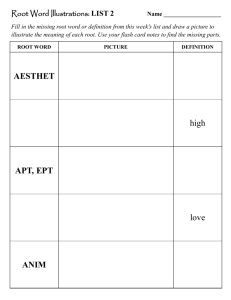
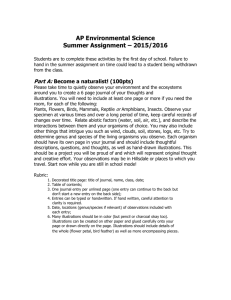
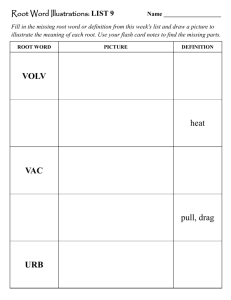
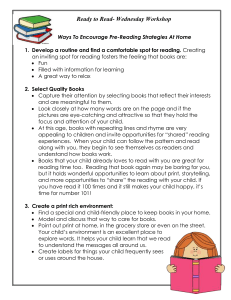
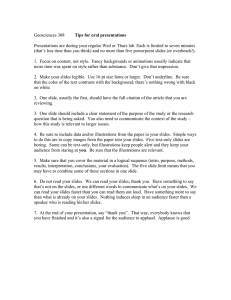
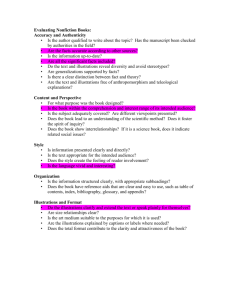
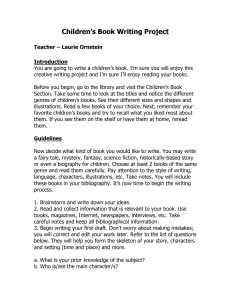
![Creating Worksheets [MS Word, 78 Kb]](http://s3.studylib.net/store/data/006854413_2-7cb1f7a18e46d36d8c2e51b41f5a82fa-300x300.png)
